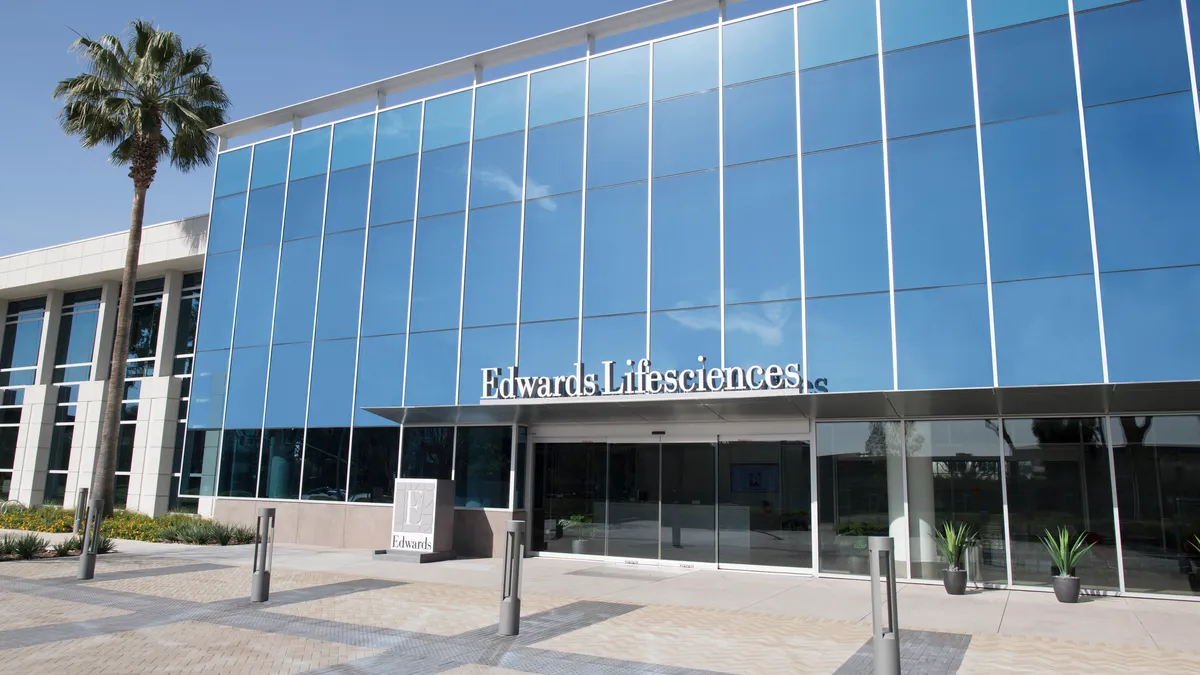Dive Brief:
- A snapshot of U.S. transcatheter aortic valve replacement (TAVR) volumes captured by Jefferies analysts suggests the market is recovering from its winter slump but still lagging behind expectations.
- Based on partial data from the one-third of U.S. sites that share data with Jefferies, the analysts calculate Edwards Lifesciences' U.S. TAVR sales increased 4% to 6% across January and February, versus the consensus estimate of 10% for the quarter.
- However, with U.S. TAVR volumes up 11% for February and COVID-19 cases staying low throughout March, the analysts see potential for the gap between their model and Wall Street expectations to narrow as more data becomes available.
Dive Insight:
Edwards fell short of analyst expectations in the fourth quarter due to hospital staffing and capacity as the omicron wave caused the deferral of some TAVR procedures. The setback followed an update from Jefferies that suggested Edwards was on track to miss the 14% consensus estimate of TAVR growth. At that time, the model suggested 7% growth. In the end, Edwards reported 12% growth, falling two percentage points short of the consensus.
With first quarter financial results season now on the horizon, the Jefferies analysts have provided another update based on the data they collected in January and February. The model suggests U.S. TAVR volumes were in the range of down 2% to up 2% in January, before recovering in February.
The analysts only have February data from 75% of the centers they track, which only represent a fraction of all TAVR sites in the U.S., so there is potential for both the final model and Edwards' performance to diverge from the current prediction. Even so, the model is in line with expectations that omicron would suppress volumes in January, and that volumes would recover as COVID-19 cases fell in February.
Jefferies has yet to see data for March. With Edwards CEO Mike Mussallem predicting a gradual recovery from the omicron wave, March could be the month that the rise in volumes gains traction and moves the model closer to the 10% consensus estimate of first quarter growth.
"While our second look at 1Q suggests TAVR volumes are trending below expectations, COVID case volumes continue to decline which led to strong TAVR volumes in February. Should this continue, we see a pathway for strong March numbers that could narrow the gap between our models and Street expectations," the Jefferies analysts wrote in a Sunday note to investors.
Edwards held its nerve in the face of the omicron wave, retaining its $5.5 billion to $6 billion revenue guidance range for 2022 despite the variant causing a slow start to the year. Management expects first quarter sales to come in between $1.27 billion and $1.35 billion. Edwards is set to report its results later this month.










